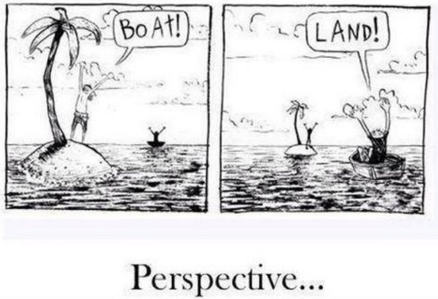Today, my new book, “On The Brink: A Fresh Lens to Take Your Business to New Heights” launches!! It is so exciting.
You can find a copy at Barnes & Noble, on Amazon, at airport/train stations in Hudson News and in so many of the book stores you like to support.
How do you write a book? I’ll tell you!
I have found it so interesting to answer endless questions such as: “How did you do it?” which is inevitably followed by: “Could I do it too?”
That’s why this seemed like a great time to share with you some of the lessons I have learned writing this book, finding a great publisher, hiring a publicist and getting this book to market. If nothing else, if you are still interested when I am done, give me a call and we can talk about your great idea for your book.
First, you need a story!
I know that sounds strange, but what I learned from the start was that what I wanted to write about were the stories that I heard my clients talking about as my firm, Simon Associates Management Consultants (SAMC), worked with them to reignite their businesses. This wasn’t my story. It was theirs.
These were all mid-size companies we were working with and as I looked around, there wasn’t a great deal of information about small or mid-market businesses. Tom Peters and Jim Collins were writing about successful large companies, but their stories didn’t have anything in common with those told in “Blue Ocean Strategy,” one of my favorite business books.
So when I chose to write my book, I intentionally chose companies with great stories. It didn’t matter what type of business or organization they were: a start-up (ParagonRX), a division of a large company (TelerX), a college (Centenary College) that was ready to grow, and a well-established company (Laclede Chain) that had been around since the 1850s but needed a new direction to grow again. They all had great stories to share but merely needed a platform to tell them to others who maybe could use a similar boost to get them “soaring” again.
Then you need a “fan” or two!
I had a friend who was a great editor and writer, Jim Wade. Jim was my fan. He loved the idea of my book, he created a structure for it and he tried hard to get me an agent. It was early in the writing phase, and the thinking phase, and I never could quite grasp where he wanted to take my ideas. Finally I set the book aside and started to think more about my clients’ stories, and my own. But, Jim never stopped telling me that I had a good book waiting to come out and that I should keep pushing it along.
It didn’t hurt that I had a husband who was pushing me along, too. Fans like these are essential. Because it is far too easy to just stop.
Writing (this sounds silly) really comes next.
Once I committed to it, I wrote and re-wrote this book enough times that even I was tired of looking at it. I had great support — whether it was ML Ball who was amazing as a copy editor and proofreader or others who helped conceptualize and edit the writing. Slowly but surely, the book came together.
As the parts became purposeful and meshed cohesively into a whole, the value of the effort began to shine through. There was really something here that others would find of value and could use to help them step back and look at their own business — perhaps even their own lives — and begin to better “see, feel and think” about what they were doing so that they could finally start to do what was needed to push forward again.
The value of an anthropological perspective on these stories and the significant impact they could have on businesses should not be underestimated. While writing the book, I discovered a slowly growing field of business/corporate/organizational anthropology. I began to get an abundance of calls from graduating students majoring in anthropology who were trying to find careers in business. The entire market space of corporate anthropology, however, was a very big “blue ocean” where there was little form and less structure — a great deal of possibilities for the book to add value in innovative ways.
Publish or self-publish?
Once I had a draft that read well and seemed like it could go to market, I had to decide how to publish it. Self-publishing was certainly a viable option. Boy, am I glad I had the good fortune to meet Tanya Hall and her publishing company, Greenleaf Book Group, at a Vistage meeting and submitted to her, almost on a lark, my manuscript for review. Greenleaf picked it up — but of course, I had to re-write it, again. This time it was with an amazing development editor who knew how to turn my good stuff into really good stuff. Greenleaf had a model that fit my own style. It was a great collaboration.
I don’t think that self-publishing would have been bad. I just had no idea what it would take to turn a book into a marketable book, but I quickly learned about marketing, distribution channels and a whole lot more from the great publicist I hired, Sarah Wilson.
This was a new adventure for me and I had no idea how to navigate the rocky waters of this white water adventure. Thank you Tanya and Sarah!
Ready, fire, aim!
I must confess that I feel that way far too often, in my business and in life. This has been an exhilarating time of learning the ropes and trusting that your publicist and your publisher know where you are going and how to get your there. But it is neither simple, self-evident nor a straight line. The publishing field is a fast-moving process. Things that you might have done three years ago to publicize and sell your books are not being done today, and what is being done now might not work tomorrow.
Similarly, when I first went into business for myself, my PR firm placed me on TV and radio and in print publications. Those have not gone away. But added to them are today’s abundant and excellent podcasts — sort of non-radio radio stations with thousands of listeners and fans. Then there are the blogs about your blog. And the speaking opportunities, the interviews, and the book signings. Nothing strange but everything fast-moving. Twitter (check mine out: @simonandi) is a key driver in ways that I could not have anticipated. Facebook, not as much. LinkedIn is terrific — some of the time. But all of it is testable and results can be easily seen.
At SAMC, we are HubSpot partners. This means that a good deal of the analytics we need to know to track the efficacy of our efforts is available through our HubSpot data base. If you aren’t connected to HubSpot (I highly recommend it!), there are Twitter dashboards and Google analytics where you can access pretty much everything you want and need to know about what is going on as you push your book along.
And of course, there is the website I built to create awareness of my book, www.andisimon.com, the tool kit, videos and all the rest to build a platform, engage with my audience and add value beyond the book itself.
Then the reviews start to come in.
You know there are going to be reviews. You just don’t know what they might say. The ones on Amazon and Publishers Weekly were very gratifying. Once you publish and put your “baby” out there, hold your breath because you really don’t know what is going to click with people and what is not.
Here is one review that I found really cool. It came from the Executive Director of the American Anthropological Association, Ed Liebow. He sent me a lovely note after he read the book, saying:
Dear Dr. Simon, I received a copy of your new book, On the Brink, earlier this week, and picked it up to browse through during a lunch break on Tuesday. It pulls together nicely in one place a good deal of welcome wisdom, clearly written for a general readership, and I ended up gulping it down from cover to cover over the past four days’ lunch breaks. I hope that the book enjoys great success…
It was equally thrilling to see the book picked up for review by Publishers Weekly! It doesn’t review all the books so it was quite exciting so read their commentary:
Simon presents her discipline as a methodology for diagnosing and changing company cultures, developing great products and design, and creating strategies for branding, marketing, and sales. She presents case studies from seven different companies, exploring how they handled crises and leadership changes. Along the way, she shows businesspeople how to apply the concepts and methods of anthropology, such as field research and “culture probes.” She also makes a more general case for the qualities of anthropologists, including “always observing to see with fresh eyes” and being willing to “fail early and often.
What comes next?
If this book was written to truly help others better “see, feel and think” about their businesses or organizations by applying the theory, methods and tools of anthropology to complex organizations, then it needs to be shared widely. Now the next step is to do just that.
It was written for CEOs and their colleagues in the C-suite who are tasked with driving a business. It was written for their managers and staff who need to see their roles in their organizations with fresh eyes. Why? Because with the rapid speed of change in today’s business environment, we are going to have to use new tools to find possibilities and opportunities, design better competitive initiatives, and sustain business growth by opening new market space, not simply by playing a classic role in an old, established and (quite possibly) shrinking one.
Becoming a commodity is hardly a growth strategy and that is what far too many companies find that their actions have lead to — they are just “another,” struggling to keep costs down and compete on price. “On the Brink” was written to help these types of businesses regain their energy and move forward.
And finally, enjoy the book!
I do hope you enjoy this book and find the anthropology tools easy to use. They were designed to help you see what might be all around you, capitalize on it and forge new paths to innovation and success.
As John Seely Brown wrote: “The way forward is all around you.” I truly believe it is, if only you open you mind, your eyes and your ears to catch the cues that are coming right at you. Below is one of my favorite cartoons that captures it all so well. Do you see what you are missing?




